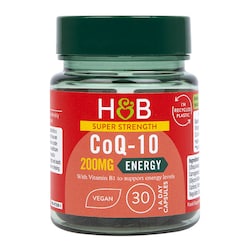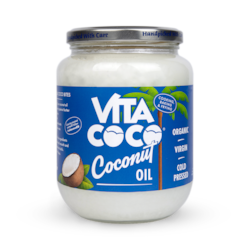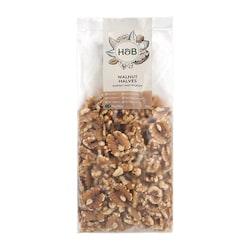20% off £30
Everything you need to know about seitan

Seitan is a popular meat alternative used in vegan and vegetarian dishes.
Seitan: what is it?
Produced by wheat gluten and water, seitan is marketed as a high protein, low carb substitute for animal protein. Although, due to it being made entirely out of gluten, there are some concerns around it causing problems with your digestive system.
In this article you will find everything you need to know. The advantages, the disadvantages and everything in between, so you can decide for yourself if it’s a likely addition to your diet.
What is seitan made of?
Seitan is made from gluten, the main protein in wheat. It is made by washing starch away from wheat flour. When it rises it leaves behind strands of gluten that can be used to imitate the texture of animal-meat.
What does seitan mean?
Seitan pronounced ‘say-tan’ originates from Japan. It comes from the Japanese word ‘sei’ meaning ‘made of’ along with ‘tan’ which is the shortening of the word ‘tanpaku’, which simply means ‘protein’.
Traditionally it was prepared by Zen Buddhists as early as the 6th century but has since grown in popularity due to the rise of veganism and vegetarianism.
It’s now seen as a vegan staple and is a key ingredient for many plant-based diets and recipes.
It’s also known as:
- wheat gluten
- vital wheat gluten
- wheat protein
- vital wheat protein
- textured wheat protein
- mock meat and wheat meat
Summary
- Seitan is made of wheat gluten and water
- It’s promoted as a meat substitute for vegans and vegetarians.
- It’s made by washing starch away from wheat flour
- Pronounced ‘say-tan’ it is of Japanese origin, simply meaning ‘made of protein’ and was traditionally used by Zen Buddhists
What are the health benefits of seitan?
While seitan consists practically of just gluten it is actually high in protein and minerals, whilst being low carbs and fat.
Because the starch that you would usually find in wheat flour is washed away, one serving (usually between 1-3oz) contains just 4g of carbs. Also, since wheat grains are virtually fat-free, seitan only contains 0.5g of fat per serving.
However, it's worth noting that shop-bought seitan may contain other ingredients, which can change the value.
Nutritional value of seitan
1 serving of seitan (made from 1 oz of wheat gluten) provides the following:
| Calories | Protein | Selenium | Iron | Phosphorus | Calcium | Copper |
| 104 kcal | 21g | 16% of RDA | 8% of RDA | 7% of RDA | 4% of RDA | 3% of RDA |
Summary
- Seitan is high in protein and minerals, whilst being low carbs and fat.
- One serving of seitan (usually 1-3oz) contains just 4g of carbs
- Since wheat grains are virtually fat-free, seitan only contains 0.5g of fat per serving
Three ways seitan can benefit your diet
1. Good source of protein
One of the biggest benefits is the protein in seitan.
Protein in seitan is high because it's virtually made out of gluten, the main protein in wheat. It's popular in the vegan and vegetarian community, although the exact amount of protein can vary on whether other proteins such as soy flour or legume flour are added.
When compared to animal protein, seitan protein contains between 15 and 21 grams – based on a 3oz serving, which is roughly the equivalent to proteins in chicken or beef.1
However, unlike animal protein, seitan meat does not contain enough lysine. Lysine is an amino acid that the body needs to get from food, and due to its low levels, seitan is not considered a complete protein. Although, this can easily be resolved by eating lysine-rich foods, such as beans, nuts seeds and grains in order to meet their needs.
Why is seitan chewy?
Because of the way seitan is made it needs to be kneaded. The more it’s kneaded, the more gluten you develop and the chewier it will be.
Knead for less time if you are looking for less chewy seitan.
Summary
- Seitan is popular amongst vegans and vegetarians because of its high protein level
- The exact amount of protein can vary depending on which other proteins are added
- Seitan contains around 15-21 grams of protein, based on a 3oz serving, which is roughly the same as chicken or beef
- Seitan does not contain lysine, an important amino acid for the body (this can be overcome by eating lysine rich foods e.g. beans, nuts, seeds or grains
2. Versatile in cooking
The simplicity of seitan is to its own advantage. As it's plainly made from wheat gluten and water, it has an indistinct flavour that means that seitan food or seitan vegan food has the ability to absorb other sauces, flavours and seasonings very well.
This versatility means that seitan food has a wide range and can adapt to almost any meal.
8 popular uses among vegans and vegetarians include:
- Cut into slices like meat, marinated or baked
- Minced and used as a ground beef substitute
- Sliced into strips for fajitas or stir-fries
- Chicken strip style, breaded and fried
- Added to hearty stews or casseroles
- Used on skewers or kebabs on a grill
- Cooked in broth or soup
- Steamed to produce a lighter flavour
What does seitan taste like?
Seitan is probably more popular for texture rather than its taste. Compared to alternatives like tofu or tempeh, seitan has a ‘meatier’ structure. Taste wise it’s said to be dense but pleasant, much like a bland chicken, which adds to the ‘meaty’ effect.
Making seitan at home
Seitan is made by producing a dough with whole wheat flour and water.
The dough is then washed under a running tap or soaked in water and kneaded until the water becomes clear. Clear water indicates all the water-soluble wheat starch, bran and wheat proteins have been removed, leaving insoluble gluten.
Summary
- The simple flavour of seitan works in its favour as it can easily absorb other flavours
- Its very versatile and can be used in a variety of ways
- While the taste may be quite plain, the meaty texture makes it a popular meat substitute
3. A good alternative if you have a soy allergy
Popular meat substitutes such as tofu, tempeh and other processed alternatives are often made from soy.
Soy allergies are one of the most common food allergies, particularly among young children.2 This can make it difficult for vegans and vegetarians with an allergy to soy to find a suitable replacement.
As seitan is predominantly made from wheat, it makes it the perfect choice for people with such allergies.
However, as a precaution it's probably wise to check the ingredients of pre-made seitan to ensure that it's safe for you to eat if you're prone to other food allergies.
Is seitan better than tofu?
Seitan is higher in protein and lower in fat than tofu. Naturally, tofu is a bit higher in fat and therefore lower in total protein3. Low fat or higher fat versions of each are available to buy.
| Energy | Fat | Protein | Carbs | Iron | Selenium | Phosphorous | Manganese | Calcium | |
| Seitan (85g) | 90 kcal | 1g | 18g | 3g | 1.2mg 6% of RDA |
10mcg 14% of RDA |
65mg 5% of RDA |
- | 3.5% of RDA |
| Tofu (65g) | 98 kcal | 5g | 10g | 3g | 1.6mg 9% of RDA |
13mcg 19% of RDA |
136mg 14% of RDA |
8mg 38% of RDA |
175mg 18% of RDA |
Summary
- Soy allergies are one of the most common food allergies
- Many meat replacements on the market, such as tofu and tempeh are soy-based
- As seitan is mainly made from wheat it’s a great choice for those with allergies
- Seitan is lower in fat and higher in protein than tofu, however there are lower and higher fat alternatives available
The side effects of seitan
Sensitive to gluten
As you will now understand, seitan is predominantly made of wheat gluten.
So, if you have allergies, sensitives, or intolerance to wheat or gluten should avoid seitan as it's possible it could cause a particularly intense reaction.
Seitan also includes sodium, which will be indicated on the packaging. Those who need to watch their sodium intake might want to make their own seitan so they can monitor the sodium themselves.
Stomach and digestion
It’s possible that gluten may affect people differently from others. For that reason, it’s worth considering that the gut regulates itself so that only small food particles can pass through to your bloodstream.
However, the gut can become ‘leaky’, allowing larger particles to pass which can cause discomfort.4
If you find you have any side effects from eating gluten, such as gas or an upset stomach, you should remove it from your diet for 30 days.5
Overview of seitan
Generally, it seems that seitan may be a good food choice for some people but can cause unpleasant symptoms in others.
Seitan is a high protein meat substitute made from wheat gluten and water. It’s a great alternative for those who are unable to consume soy, which is found in other substitutes such as tofu and tempeh.
However, if you’re wheat or gluten intolerant, including those with sensitivities or allergies, you must strictly avoid seitan.
Until more research into how gluten impacts the gut is understood, it is wise to listen to your body and make your food choices on what you think best fits your diet.
Last updated: 13 June 2022
- https://www.scmp.com/business/companies/article/3118085/chinas-efforts-bolster-health-care-system-against-future-crises
- https://acaai.org/allergies/types/food-allergies/types-food-allergy/soy-allergy
- https://healthyhappylife.com/tofu-versus-seitan-taste-texture-and/#:~:text=But%20you%20can%20see%20that,source%20of%20lean%20veggie%20protein.
- https://pubmed.ncbi.nlm.nih.gov/25407511/
- https://pubmed.ncbi.nlm.nih.gov/22149581/



































